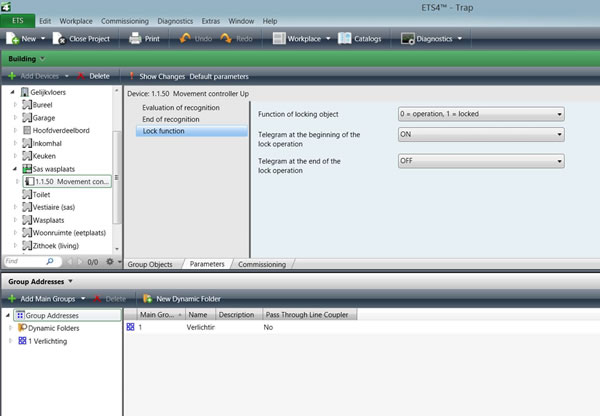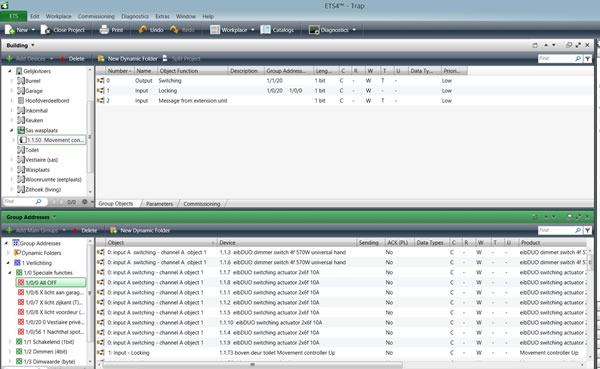 By Jan Magnus, EIBKon BVBA.
By Jan Magnus, EIBKon BVBA.
The Problem
Imagine a private home in which lights are switched on using motion detection, but they should be kept on for cleaning purposes. Working in parallel on the binary output of the motion detector using the same group address works, but it fails when somebody walks through the detection field. Using a logic combination (OR function) on the binary output works, but the effects are somewhat strange. When you switch OFF the ‘bypass switch’ your light will remain ON for the duration of your additional transmission delay. In other words, the customer presses OFF, but the lights stay ON.
The Solution
The solution was found when using more recent motion detectors. These now have a ‘locking’ object that allows the detection to be deactivated. The aim in this instance, is to deactivate the detector whilst simultaneously activating the binary output. However, within the standard functionality of KNX, this will be problematic.
If we send a group address to the binary output and this same address is sent to the locking object of the motion detector, this should work, theoretically. The problem is that we are dependent on the output reacting faster than the locking object, or vice versa, but there are no guarantees.
Another problem occurs if we reverse the command. When releasing the locking object, we also send a command to the binary output. If somebody were to walk through the detection field, their light will remain OFF as long as they move AND as long they did not stand still during the additional transmission delay.
There is another less complicated way to solve this problem. When you check the parameters of the locking object, you will see that it is possible to define the state of the output when locking, and also when unlocking. So we will not act directly on the binary output, but we will control only the motion detector, which will take care of the binary output.

Choose the Right Product
Before starting, check that you have the right motion detector for your application. Do you need it for inside or outside use? Do you need presence detection? If you choose wisely, you will not need additional logic functions and your program can be kept clean and easy to manage.
The solution is very simple: one object on the ‘switching’ object of the motion detector; a direct link to the binary output; and one object on the ‘locking’ input. This object goes to a bypass switch. A good idea is to make the LED of this bypass switch blink when activated.

To make the installation really state-of-the-art, link the ALL OFF object of your installation also to this ‘locking’ object. So that when you leave the house, you unlock the detector. The big advantage of doing this is when the detector is unlocked and lights are ON, you will reset the time delay AND switch OFF the lights. When moving back into the detection field, the lights will immediately switch on again!
You can even extend the functionality of your motion detectors by sending a different dim value for day/night modes, or an external preset for transmission delay etc, thereby making your customer happy and adding to the value of the project.
Jan Magnus is a KNX System Integrator for EIBKon BVBA, a KNX project management company based in Belgium.











